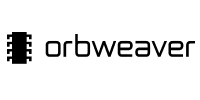Download this article in PDF format.
Supply chain teams are constantly battling data silos, those closed-off data sets that can limit analytical capabilities, impede access to internal and external insights and interfere with strategic decision-making. This long-standing challenge isn’t new by any means, but it is becoming increasingly bothersome as organizations generate, capture and analyze more and more data.
Consider this: the world will copy, create, capture and consume 181 zettabytes of data this year—up from 149 zettabytes in 2024. To put this in perspective, one zettabyte equals 1 sextillion bytes, or the equivalent of what 250 billion DVDs can hold. With 90% of the world’s data generated only within the last two years, IDC estimates that global data volumes are doubling every four years.
A good portion of that data will be generated and used by the world’s supply chains, which have become increasingly digital, complex and intertwined over the last 5-10 years. These massive volumes of data will put even more pressure on the data silos that already hinder collaboration, efficiency and visibility.
Simply put, operating with disconnected information is no longer a viable strategy for any modern supply chain. “Operationally, these silos mean that your supply chain team might not be aware of inventory issues that the warehouse team is experiencing, leading to misaligned operations, delays, and disruptions for end customers,” Chain.io warns in “Overcoming Data Silos in Global Supply Chains.” Data silos also hamper analytical abilities. If internal teams can’t access data that lives outside of a specific organization or department, for example, they won’t be able to access valuable insights that drive strategic decision-making.
The good news is the same technology that’s generating all of this data can also help effectively break down silos, support better information flows and create single sources of truth for all stakeholders to work from. Here are four different ways procurement and supply chain leaders can begin to break down their data silos and turn their insights into competitive advantages:
1) Assess your current tech stack. The first step in breaking down data silos is identifying what you already have. Take stock of your existing systems, including procurement, transportation management (TMS), warehouse management (WMS) and enterprise resource planning (ERP) systems. “Consider partner and vendor systems as well because smooth data flow is vital for collaborative ventures,” Chain.io advises.
2) Encourage a culture of teamwork and collaboration. Technology can manage a lot of the heavy lifting on the data integration side, but the people using the systems also have to be onboard with, trained on and aware of the benefits of working with those solutions. One way to ensure adoption is by fostering a culture of teamwork. This is especially important for organizations where departments have historically operated as independent silos. “Start by defining clear, shared objectives that align with business goals,” Rafael A. Vela advises in “Supply Chain Collaboration: Breaking Down Silos to Drive Efficiency.” “Whether it’s improving on-time delivery or reducing costs, everyone in the supply chain must understand how their roles contribute to the bigger picture.”
3) Focus on end-to-end supply chain integration. According to Armstrong & Associates, such integrations must include:
- Unified systems and technologies. Invest in systems that promote information sharing. This could be a centralized platform like an ERP or interconnected system that allows different departments to access and share information in real-time.
- Seamless communication across stakeholders. “Open and consistent communication between all stakeholders –suppliers, manufacturers, distributors and customers– is vital,” Armstrong & Associates says. “This can be achieved through shared platforms, regular meetings and clear communication protocols.”
- Real-time data sharing. Having access to real-time data on inventory levels, demand forecasts, production schedules and delivery status empowers everyone to make informed decisions and respond quickly to changes.
4) Create a convincing business case. Getting approval for new IT projects takes a certain finesse in today’s resource-constrained business environment, but Armstrong & Associates outlines some of the clear benefits of replacing siloed systems with integrated platforms. For example, when information flows freely across your supply chain, processes become streamlined and automated. In CFO speak, this translates into less time wasted on manual tasks, fewer errors and faster turnaround times. End-to-end integration provides a clear, real-time view of the supply chain and helps you avoid potential disruptions, service interruptions and other issues that can impact the bottom line.








